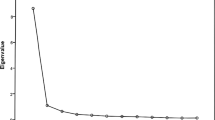Abstract
This study describes acquisition of knowledge and motor skill in bladder training (BT) and pelvic floor muscle training (PFMT) and adherence following a behavioral modification program (BMP). Essentially continent (0–5 episodes in past year) community-dwelling older women (n=359) were randomized to treatment (n=164), a 2-h group education session supplemented by one brief individualized session of approximately 10 min, or control (n=195), no instruction, and followed for 12 months. Knowledge, motor skill, and adherence to the BMP were documented. Changes in pelvic muscle function and voiding interval were used to validate self-reported adherence. Following group instruction, mean BT and PFMT knowledge was 90 and 86%, respectively; 68% demonstrated correct PFMT technique without additional instruction, 29% required brief instruction, and 3% were unable to learn PFMT technique. Adherence ranged from 63 to 82% for PFMT and 58 to 67% for BT. Group instruction supplemented with brief individual instruction as needed is an effective teaching method for BT and PFMT.
Similar content being viewed by others
References
Fantl JA, Newman DK, Colling J et al (1996) Urinary incontinence in adults: acute & chronic management. Clin Prac Guidel Quick Ref Guide Clin, No. 2, 1996 update (AHCPR Publication No. 96-0682). Rockville, MD, US Department of Health and Human Services, Public Health Service, Agency for Health Care Policy and Research
Holroyd-Leduc JM, Straus SE (2004) Management of urinary incontinence in women. JAMA 291:986–995
Diokno AC, Sampselle CM, Herzog AR et al (2004) Prevention of urinary incontinence by behavioral modification program: a randomized, controlled trial among older women in the community. J Urol 171:1165–1171
Dougherty MC, Dwyer JW, Pendergast JF et al (2002) A randomized trial of behavioral management for continence with older rural women. Res Nurs Health 25:3–13
Wyman JF, Fantl JA, McClish DK, Bump RC (1998) Comparative efficacy of behavioral interventions in the management of female urinary incontinence. Am J Obstet Gynecol 179:999–1007
Janssen CCM, Lagro-Janssen ALM, Felling AJA (2001) The effects of physiotherapy for female urinary incontinence: individual compared with group treatment. BJU Int 87:201–206
Morkved S, Bo K, Schei B et al (2003) Pelvic floor muscle training during pregnancy to prevent urinary incontinence: a single-blind randomized control trial. Obstet Gynecol 101:313–319
Miller J, Ashton-Miller J, DeLancey J (1998) Quantification of cough-related urine loss in SUI using the paper towel test. Obstet Gynecol 91:705–709
Bandura A (1977) Self-efficacy: toward a unifying theory of behavioral change. Psychol Rev 84:191–215
van Ryn M, Vinokur AD (1992) How did it work? An examination of the mechanisms through which an intervention for the unemployed promoted job-search behavior. Am J Community Psychol 20:557–597
Vinokur AD, Schul Y (1997) Mastery and inoculation against setbacks as active ingredients in the JOBS intervention for the unemployed. J Consult Clin Psychol 65:867–877
Vinokur AD, Schul Y, Vuori J, Price RH (2000) Two years after a job loss: long-term impact of the JOBS program on reemployment and mental health. J Occup Health Psychol 5:32–47
Brink CA, Wells TJ, Sampselle CM, Taillie ER, Mayer R (1994) A digital test for pelvic muscle strength in women with urinary incontinence. Nurs Res 43:352–356
Peschers UM, Gingelmaier A, Jundt K, Leib B, Dimpfl T (2001) Evaluation of pelvic floor muscle strength using four different techniques. Int Urogynecol J Pelvic Floor Dysfunct 12:27–30
Wyman JF, Choi SC, Harkins SW, Wilson MS, Fantl JA (1988) The urinary diary in evaluation of incontinent women: a test-retest analysis. Obstet Gynecol 71:812–817
Morkved S, Bo K (1996) The effect of post-natal exercises to strengthen the pelvic floor muscles. Acta Obstet Gynecol Scand 75:382-385
Reilly ETC, Freeman RM, Waterfield MR, Waterfield AE, Steggles P, Pedlar F (2002) Prevention of postpartum stress incontinence in primigravidae with increased bladder neck mobility: a randomised controlled trial of antenatal pelvic floor exercises. BJOG 109:68-76
Sampselle CM, Miller JM, Mims BM, DeLancey JOL, Ashton-Miller JA, Antonakos CL (1998) Effect of pelvic muscle exercise on transient incontinence during pregnancy and after birth. Obstet Gynecol 91:406-412
Acknowledgments
The authors would like to acknowledge appreciation to Cindy Karl, BSN formerly of the Department of Urology Research at William Beaumont Hospital for her contributions and clinical data collection, and also our deep appreciation to A. Regula Herzog, M.A., Ph.D, for her scholarly contributions and whose untimely passing has left us with an irreplaceable loss (8 January 1941–28 July 2002). Grant support: funded by National Institutes of Health-National Institute of Aging MERIT Award R37 AGO8511 and Nursing R01 NR0718.
Author information
Authors and Affiliations
Corresponding author
Rights and permissions
About this article
Cite this article
Sampselle, C.M., Messer, K.L., Seng, J.S. et al. Learning outcomes of a group behavioral modification program to prevent urinary incontinence. Int Urogynecol J 16, 441–446 (2005). https://doi.org/10.1007/s00192-005-1284-7
Received:
Accepted:
Published:
Issue Date:
DOI: https://doi.org/10.1007/s00192-005-1284-7




